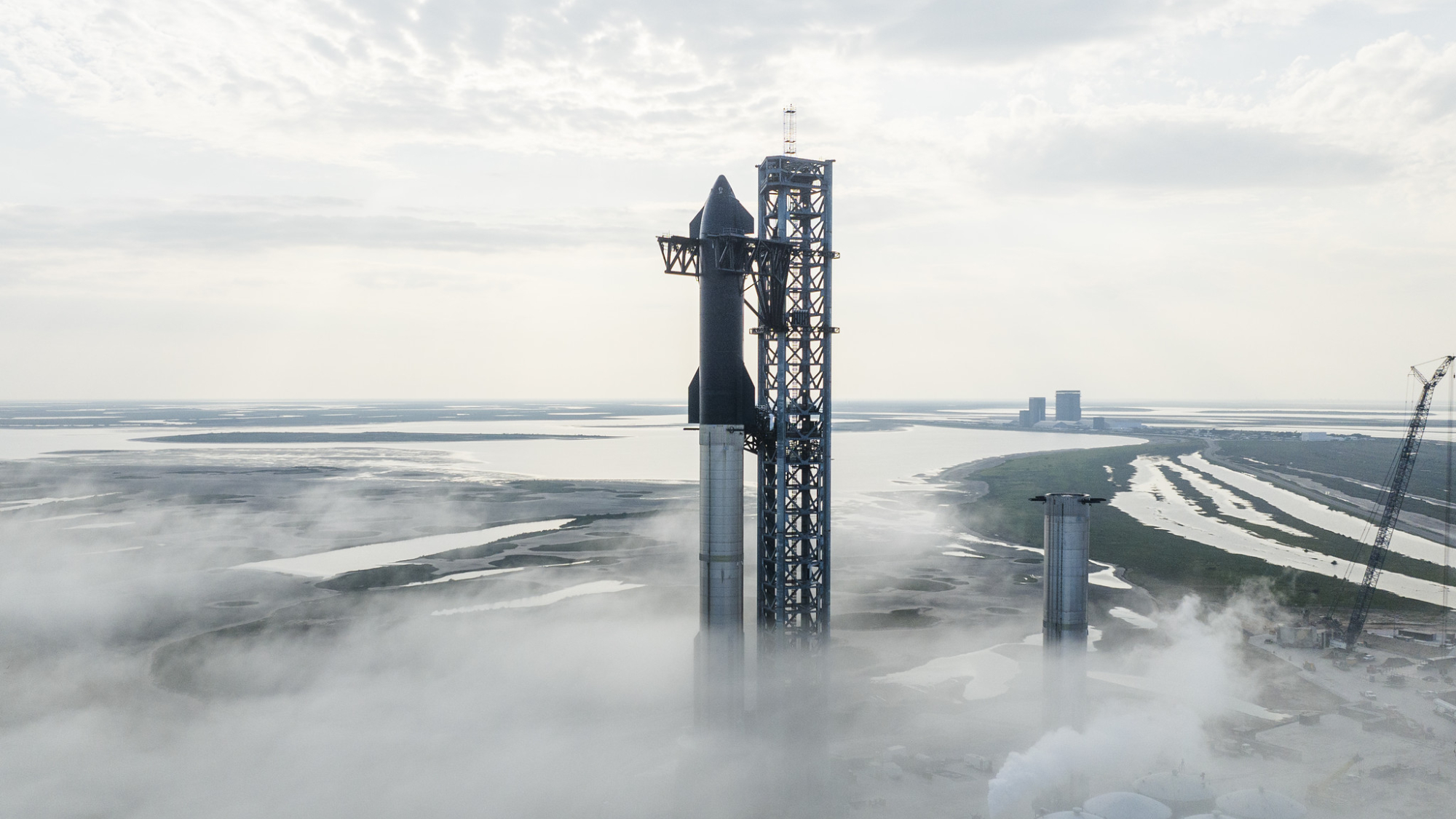SpaceX fueled up a fully stacked Starship for the first time ever on Monday (Jan. 23), notching a huge milestone on the path toward the vehicle's debut orbital flight.
Elon Musk's company conducted a "wet dress rehearsal" with the 395-foot-tall (120 meters) Starship Monday at its Starbase facility in South Texas, running through many of the procedures it will perform on launch day.
The to-do list included loading liquid oxygen and liquid methane propellant into the vehicle's Super Heavy first stage and Starship upper stage, which SpaceX stacked together on Starbase's orbital launch mount earlier this month. This action was captured by NASASpaceflight.com, which live-streamed the lengthy test, and Rocket Ranch Boca Chica, whose video is featured below (footage provided by Rocket Ranch's Anthony Gomez).
Video: SpaceX ignites multiple engines on Starship Super Heavy booster for 1st time

"Starship completed its first full flight-like wet dress rehearsal at Starbase today. This was the first time an integrated Ship and Booster were fully loaded with more than 10 million pounds of propellant," SpaceX said via Twitter on Monday evening.
"Today’s test will help verify a full launch countdown sequence, as well as the performance of Starship and the orbital pad for flight-like operations," the company added in another tweet.
The success of Monday's wet dress rehearsal keeps this Starship vehicle — which consists of a Super Heavy prototype called Booster 7 and the Ship 24 upper-stage variant — on track for an orbital test flight in the near future.
Breaking space news, the latest updates on rocket launches, skywatching events and more!
That mission — which will send Ship 24 around Earth once, with a targeted splashdown in the Pacific Ocean near Hawai'i — could launch from Starbase as soon as next month, Musk has said.
SpaceX still needs to check some important boxes to make that happen, however. For example, the company will de-stack Starship to test-fire all 33 of Booster 7's Raptor engines simultaneously. The most powerful such "static fire" trial that SpaceX has performed to date with the vehicle involved just 14 of its Raptors.
Ship 24 ignited all six of its Raptors this past September.

SpaceX is developing Starship to get people and cargo to the moon, Mars and beyond. NASA selected the vehicle to be the first crewed lunar lander for its Artemis program, and Japanese billionaire Yusaku Maezawa booked a round-the-moon flight on the vehicle for himself and a handful of artists and influencers.
SpaceX is also counting on Starship to launch the bulk of its big, next-generation Starlink 2.0 internet satellites, and to take over pretty much all of the company's spaceflight duties at some point down the road.
Though Starship's spaceflight future should be action-packed, the vehicle has been ground-bound for nearly two years now. The most recent Starship test flight occurred in May 2021; it sent a three-engine upper-stage prototype called SN15 about 6.2 miles (10 kilometers) into the skies above Starbase.
Several other upper-stage Starship prototypes had made similar journeys, but SN15 was the first to stick the landing.
Mike Wall is the author of "Out There" (Grand Central Publishing, 2018; illustrated by Karl Tate), a book about the search for alien life. Follow him on Twitter @michaeldwall. Follow us on Twitter @Spacedotcom or on Facebook.
Join our Space Forums to keep talking space on the latest missions, night sky and more! And if you have a news tip, correction or comment, let us know at: community@space.com.

Michael Wall is a Senior Space Writer with Space.com and joined the team in 2010. He primarily covers exoplanets, spaceflight and military space, but has been known to dabble in the space art beat. His book about the search for alien life, "Out There," was published on Nov. 13, 2018. Before becoming a science writer, Michael worked as a herpetologist and wildlife biologist. He has a Ph.D. in evolutionary biology from the University of Sydney, Australia, a bachelor's degree from the University of Arizona, and a graduate certificate in science writing from the University of California, Santa Cruz. To find out what his latest project is, you can follow Michael on Twitter.
